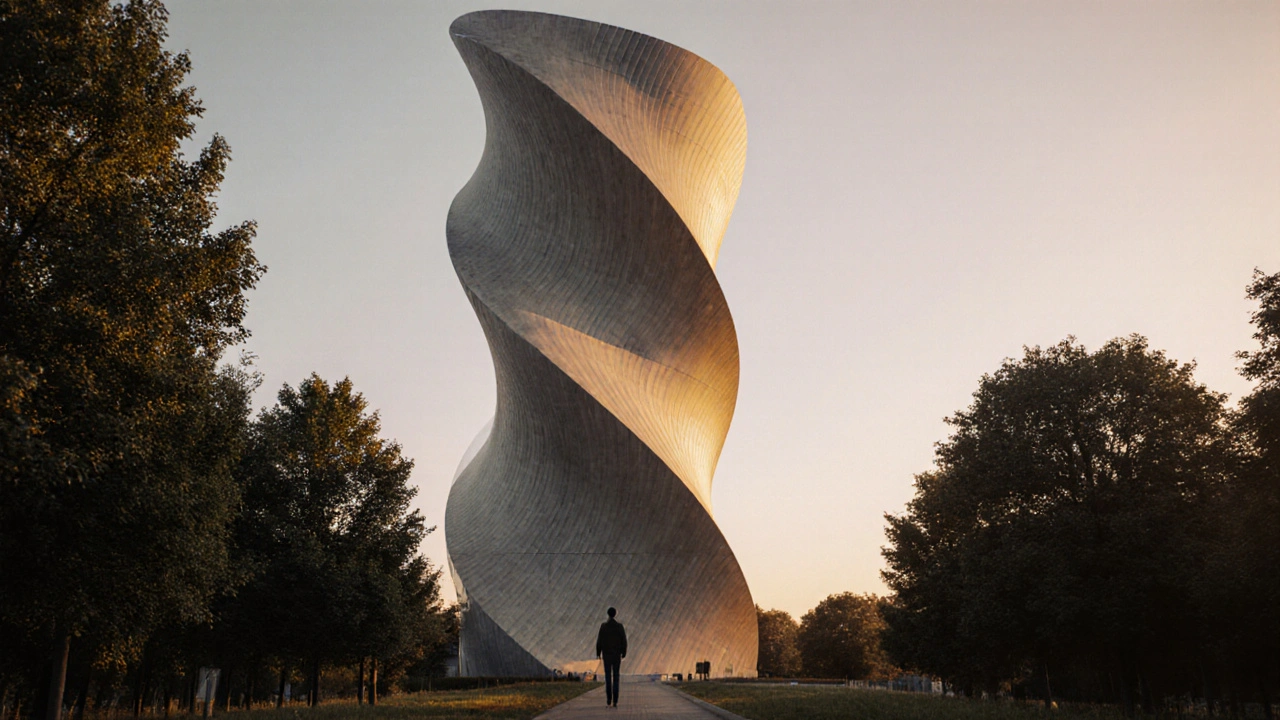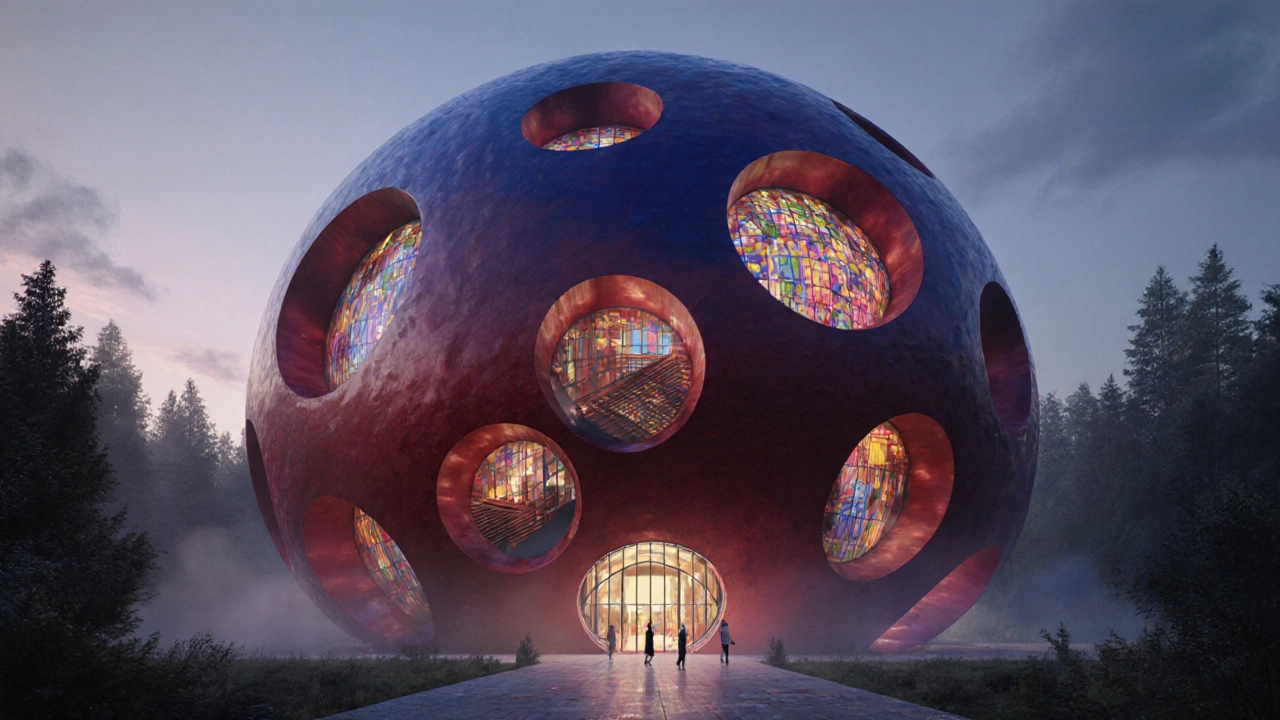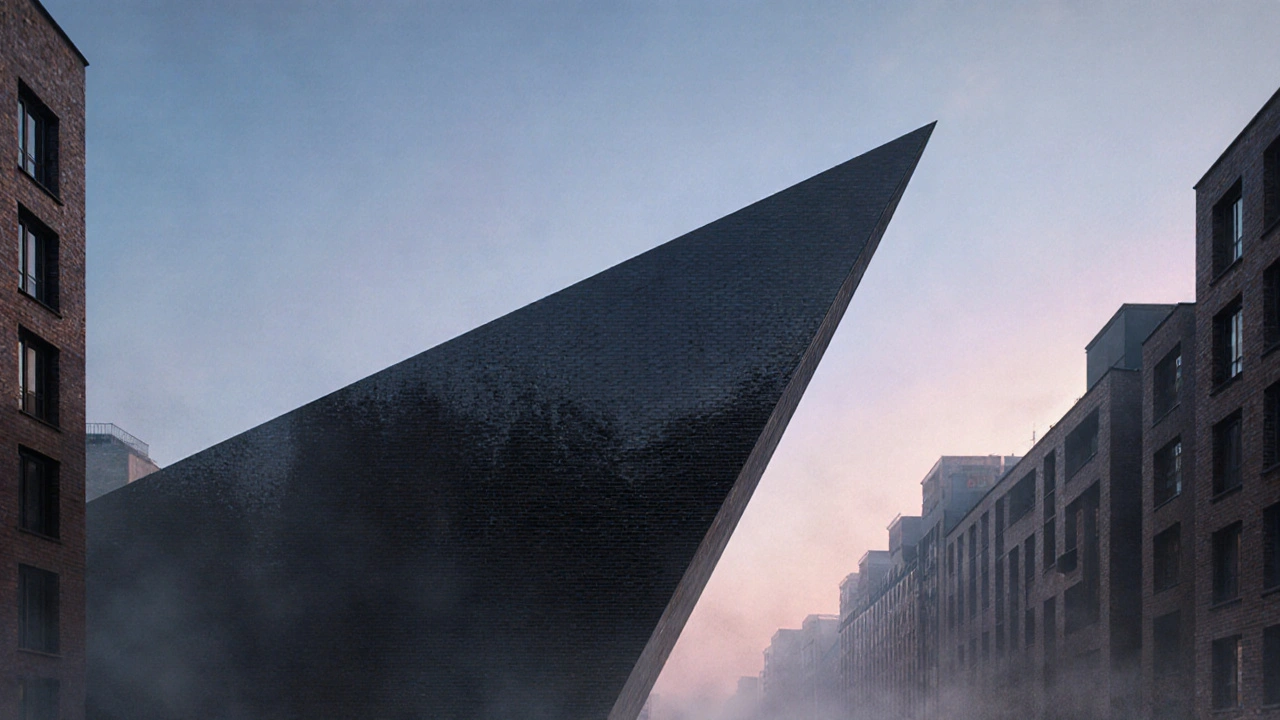Masterpieces of Expressionist Architecture You Must Visit
 Oct, 27 2025
Oct, 27 2025
Expressionist architecture doesn’t just look different-it feels different. It’s not about clean lines or symmetry. It’s about emotion carved into brick, concrete, and glass. These buildings scream joy, fear, awe, or rebellion. They were built between 1910 and 1930, mostly in Germany and the Netherlands, when architects stopped trying to imitate the past and started building how they felt. If you’ve ever stood in front of a twisted tower or a curved, organic façade and thought, “What is this?”-you’ve met expressionist architecture.
What Makes Expressionist Architecture Unique?
Unlike modernist buildings that stripped away ornament, expressionist buildings piled it on-not for decoration, but for drama. Think of them as sculptures you can walk into. They use curved walls, sharp angles, glowing colors, and unusual materials to trigger an emotional response. These weren’t just homes or offices-they were statements. Architects like Bruno Taut, Erich Mendelsohn, and Hans Poelzig wanted to express inner states: spiritual longing, postwar trauma, utopian hope.
They didn’t follow rules. They broke them. Windows weren’t placed for light-they were placed for impact. Roofs didn’t slope for rain-they soared like flames. Brick wasn’t laid in straight lines-it spiraled, bulged, and fractured. The goal wasn’t efficiency. It was experience.
1. The Einstein Tower, Potsdam, Germany
Designed by Erich Mendelsohn and completed in 1921, this is the most famous expressionist building still standing. It looks like a melting rocket or a frozen wave. Built to house a solar observatory, its purpose was scientific-but its form was pure poetry. The curved surfaces weren’t just aesthetic; they helped reduce wind turbulence around the telescope. The concrete was tinted gray to blend with the sky, and the tower rises like a single, flowing gesture.
It survived WWII because the Allies didn’t recognize it as a military target. Today, it still functions as a research center. Walk around it at sunset, and you’ll see how the light shifts across its curves-making it look alive.
2. The Goetheanum, Dornach, Switzerland
Not German, but deeply expressionist. Designed by Rudolf Steiner, this building is a temple to human spirituality. It’s made of reinforced concrete shaped like a giant, organic form-two intersecting spheres, wrapped in flowing curves. The exterior is painted in deep blues and reds, with stained glass that glows like a jewel when the sun hits it.
Steiner believed architecture should reflect inner consciousness. The Goetheanum’s interior has no right angles. Staircases spiral. Ceilings arch like ribcages. It’s not a building you admire from afar-you step inside and feel like you’ve entered a living organism. The second Goetheanum (built in 1928 after the first burned down) remains the center of the Anthroposophical movement. Visitors report feeling calm, even altered, just by being inside.
3. The Chilehaus, Hamburg, Germany
At first glance, this 1922 office building looks like a ship’s prow cut into the city skyline. It’s shaped like a wedge, squeezing between two streets with a sharp, angular tip. The brick façade is covered in dark, glazed tiles that shimmer under rain. The building was commissioned by a shipping magnate, and its form echoes the hull of a steamship-symbolizing trade, speed, and modernity.
What makes it expressionist isn’t just its shape. It’s how it defies the grid. While Hamburg’s other buildings sat neatly on rectangular plots, the Chilehaus twists, leans, and thrusts forward. It doesn’t fit-it dominates. It’s a monument to ambition, built with over 10 million bricks, each one laid with precision to create that dramatic, dynamic silhouette.

4. The Glass Chain, Berlin, Germany
Not a single building, but a radical idea. In 1919, Bruno Taut and other expressionist architects started a secret correspondence called the “Glass Chain.” They wrote letters imagining future cities made entirely of glass-transparent, glowing, spiritual. Taut’s unrealized project, the Glass Pavilion for the 1914 Cologne Werkbund Exhibition, was the closest realization. Made of colored glass panels and steel frames, it glowed like a lantern at night. Visitors walked through it like a cathedral of light.
Though the original pavilion was torn down after the exhibition, its spirit lives on. Today, the Berlinische Galerie displays models and drawings from the Glass Chain. The idea-that architecture could be a vessel for collective hope-was revolutionary. After the trauma of WWI, these architects didn’t just want to build shelters. They wanted to build a new world.
5. The Mendelsohn House, Berlin, Germany
This was Erich Mendelsohn’s own home, built in 1921. It’s smaller than his other works, but more intimate. The façade curves like a wave, with rounded windows that seem to peer out like eyes. The roof slopes unevenly, as if pulled by gravity. Inside, the rooms flow into each other without sharp corners. The staircase spirals upward like a seashell.
It was designed for his family, but it feels like a sculpture made for dreaming. Friends who visited said it was impossible to stay neutral-some loved it, others called it madness. Today, it’s a private residence, but you can stand outside and feel its energy. The way the light hits the curved walls at 4 p.m. is unlike anything else in Berlin.
Why These Buildings Still Matter Today
Expressionist architecture faded after 1930. The Nazis hated it. They called it “degenerate.” Many buildings were destroyed or covered up with plain facades. But in the 2010s, a quiet revival began. Architects started looking back-not to copy, but to remember that buildings don’t have to be cold to be functional.
Today’s biophilic design, curved interiors, and emotional spaces owe something to expressionism. The way Apple’s stores use curves and light? That’s expressionist thinking. The way some modern museums feel like immersive experiences? That’s the legacy of Taut and Mendelsohn.
These buildings remind us that architecture isn’t just about shelter. It’s about how we feel in a space. A corner can make you feel safe. A curve can make you feel free. A tower can make you feel awe.

How to Visit These Buildings Today
You don’t need a tour guide. Most are open to the public.
- Einstein Tower: Free to walk around. Guided tours inside available on weekends. Book ahead.
- Goetheanum: Open daily. Admission fee includes access to exhibitions and the main hall. No photos inside the sanctuary.
- Chilehaus: Exterior view is free. The ground floor has a café and a small museum on Hamburg’s shipping history.
- Glass Chain exhibits: Berlinische Galerie offers free admission. Check for rotating displays of expressionist drawings.
- Mendelsohn House: Private property. View from the street only. Best light is late afternoon.
Bring good walking shoes. These buildings aren’t in museums-they’re in cities, on streets, in neighborhoods. You’ll find them tucked between modern apartments and cafes. That’s the magic. They’re not relics. They’re still breathing.
What to Look For When You Visit
Don’t just snap a photo. Look closer.
- Notice how the walls curve-not perfectly, but with human imperfection.
- Watch how light hits the surface. Does it glow? Does it vanish into shadow?
- Check the windows. Are they oddly placed? Do they frame a view like a painting?
- Feel the texture. Is the brick rough? Is the concrete smooth? Did they use metal, glass, or tile in unexpected ways?
- Stand back. Does the building look like it’s moving? Like it’s about to leap forward or collapse inward?
These aren’t buildings you analyze. They’re ones you feel.
Where to Go Next
If you love expressionist architecture, you’ll also be drawn to:
- De Stijl buildings in the Netherlands-think Gerrit Rietveld’s Schroder House. Simpler, but just as bold.
- Brutalism-the emotional cousin of expressionism, using raw concrete to convey power.
- Organic architecture-Frank Lloyd Wright’s Fallingwater shares the same reverence for form as nature.
- Contemporary sculptural architecture-Zaha Hadid’s curves, Bjarke Ingels’ playful forms-they all carry the spirit of expressionism.
Expressionist architecture didn’t last long. But it didn’t need to. It proved that buildings could be more than functional. They could be alive. And that’s why, a century later, people still travel across continents just to stand in front of them.
What is expressionist architecture?
Expressionist architecture is a style from the early 20th century that uses dramatic, curved, and unconventional forms to express emotion rather than follow traditional rules. Buildings often feature twisting shapes, glowing materials, and bold silhouettes meant to evoke awe, fear, or spiritual wonder.
Where can I see the best expressionist buildings?
The best examples are in Germany and Switzerland: the Einstein Tower in Potsdam, the Goetheanum in Dornach, the Chilehaus in Hamburg, and the Glass Chain exhibits in Berlin. These are all open to the public and still standing in their original locations.
Why did expressionist architecture disappear?
It faded after 1930 because the Nazi regime labeled it as “degenerate art.” Many buildings were destroyed, covered up, or abandoned. The rise of functionalist modernism also shifted focus toward efficiency over emotion. But its influence never fully vanished.
Are there any modern buildings inspired by expressionism?
Yes. Architects like Zaha Hadid, Bjarke Ingels, and Santiago Calatrava use flowing forms, dynamic shapes, and emotional spaces that echo expressionist ideals. Even Apple Stores and modern museums borrow from its language of movement and light.
Can I visit the Mendelsohn House in Berlin?
No, it’s a private residence and not open to the public. But you can view it from the street at any time. The best time is late afternoon when the sun hits the curved façade and makes the whole building glow.